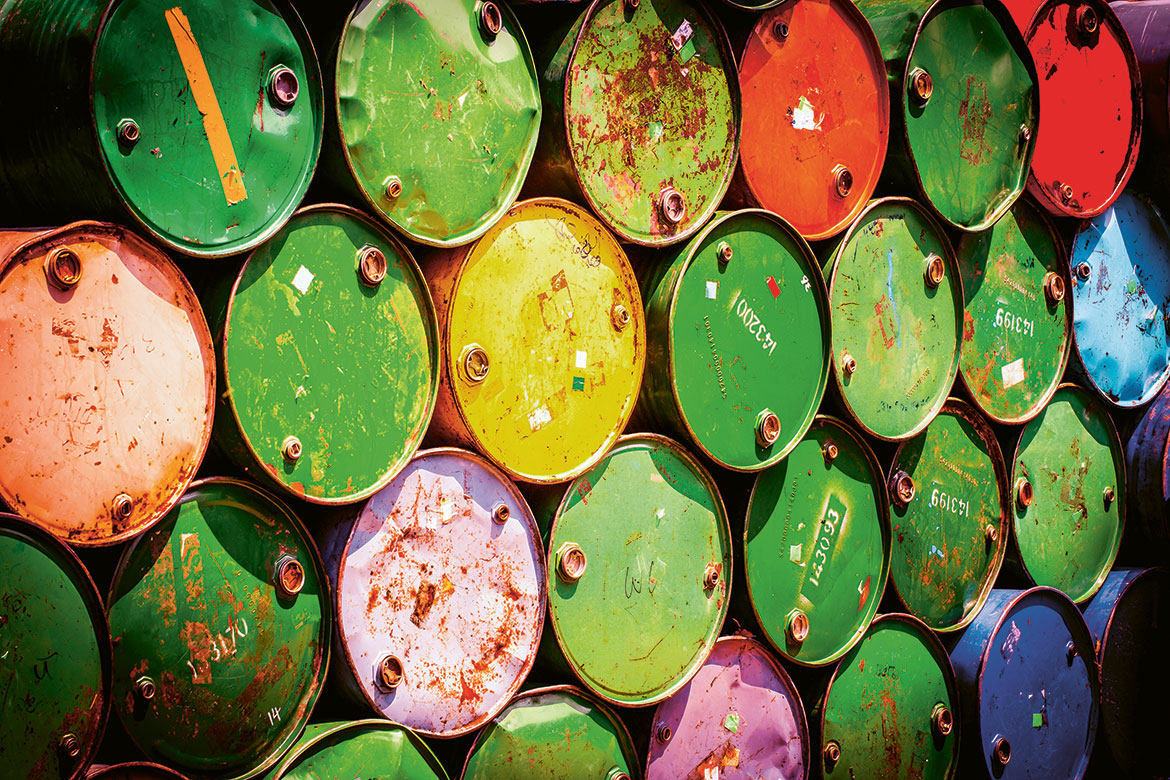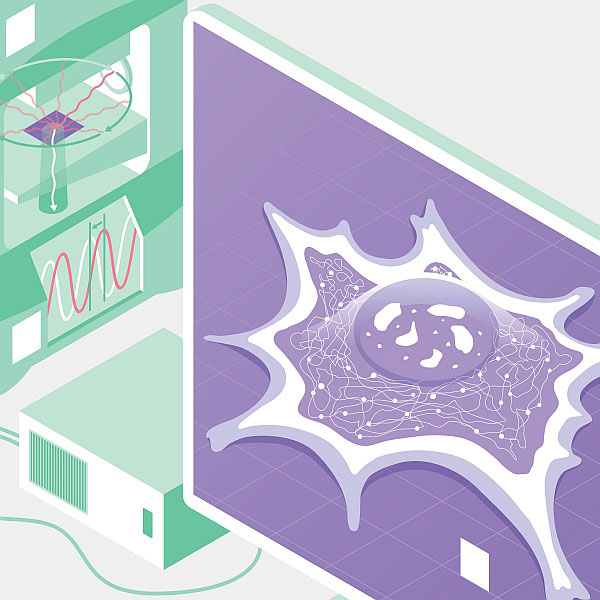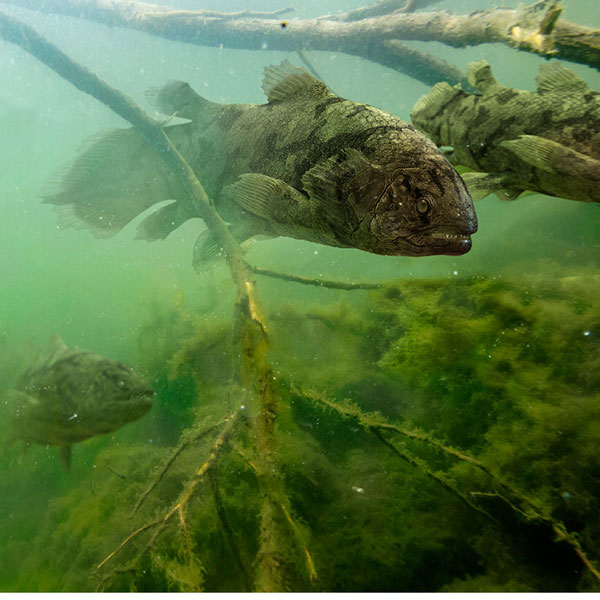Feature: Toxic world
Living with chemical uncertainty
It’s the dose that makes the poison, said Paracelsus. But with toxic substances, we might never know where the boundary lies between what’s harmless and what’s dangerous. We look at how scientists deal with this uncertainty.

The system for analysing the toxicity of chemicals is unable to cope with the sheer number of substances, some experts worry. | Image: AdobeStock/Korn V.
“It’s undoubtedly the most extensively analysed substance in the world” – the view of the Federal Office of Public Health (FOPH) on the chemical Bisphenol A, which is found in innumerable plastic products. But for decades it’s been suspected of affecting our hormonal balance and of being responsible for severe disturbances to human health, such as infertility and obesity. There was particular concern when Bisphenol A was even found in baby bottles and pacifiers.
The FOPH has issued reassuring words: “According to the current state of knowledge, Bisphenol A poses no risk to health, since public exposure is too minimal”. Nevertheless, measures are being undertaken to further reduce the use of this chemical. In Switzerland, for example, it’s been forbidden to use it in baby bottles since 2017. Despite hundreds of scientific studies and considerable efforts, it has still not been clarified just how dangerous Bisphenol A might really be. And what about all the other chemicals in daily use, about which we know even less?
Over 200 million substances
In fact, it’s all supposed to be strictly regulated. For any chemical substance entering the market in amounts of more than one ton per year, manufacturers in the EU have to provide data about any dangerous characteristics. For amounts over ten tons per year, they have to provide a risk assessment that includes information such as to what extent, and at what concentration, those substances might prove to be a risk: whether they might be poisonous, cause developmental disabilities or trigger cancerous diseases. And they have to take into consideration the manner in which human beings might come into contact with these substances. Since 2007 Swiss chemicals legislation has been oriented on the EU regulation called REACH (see Box: ‘Is chemicals legislation strict?’)
Since 2007 an EU regulation has been in force called REACH (Registration, Evaluation, Authorisation and restriction of CHemicals). It is regarded as one of the most complex pieces of EU legislation. Responsibility for the risk assessment of chemicals no longer lies with the authorities, as used to be the case, but with manufacturers and importers – thus in line with the motto: ‘no data, no market’.
All new chemicals that are used in quantities of more than one ton each year have to be registered with REACH, and data on them provided. The bigger the volume of the chemical used, the more comprehensive the data has to be for assessing its risk to humans and the environment. Old chemicals have also been registered, step by step, up to 2018. In the case of especially worrying substances, separate material evaluations have to be carried out.
Although this regulation is regarded as both strict and up-to-date, it is also subject to much criticism. For example, only a sample of five percent of all submissions are investigated carefully. A study carried out by the German Federal Institute for Risk Assessment revealed in 2018 that at least a third of the submissions for chemicals used in larger quantities lacked important data and safety tests, and yet there were no noteworthy consequences for the manufacturers. Moreover, a large number of animal experiments are necessary meaning REACH is criticised both by animal rights organisations and by scientists. That said, manufacturers of the same chemical are compelled to share their data from animal tests with each other.
To this day, some 22,000 substances are registered with the European Chemicals Agency (ECHA). Nevertheless, many doubt whether the system is up to the challenges it faces. This is because the number of new chemicals is increasing constantly, and because the risk assessments are as comprehensive as they are demanding. The public chemicals database Pubchem today lists over 200 million substances. Most of these have never been tested, or at least not according to current standards, in part because they are not used in large quantities. “Actually, it’s not at all realistic for anyone to make comprehensive assessments for every individual chemical that exists somewhere, and to determine a threshold value for it”, says Juliane Hollender, an environmental chemist at the Swiss Federal Institute of Aquatic Science and Technology (Eawag).
Many substances fall through the cracks, as is also proven by the daily analysis of water samples from the River Rhine in Basel. Hundreds of chemical substances have been discovered there that might well be toxic, but of whose existence in water we were completely unaware up to now. If we count just the ten substances occurring most frequently, then in terms of volume, we can easily state that at least 25 tonnes of untested chemicals flowed down the Rhine in 2014. And a study published in August 2019 by the Goethe University in Frankfurt am Main discovered over 1,000 unknown substances in plastic yoghurt cartons, of which many revealed toxic effects when tested in the lab. The worst examples were PVC and the biologically degradable PLA. For PET cartons, however, the analyses showed almost no toxicity at all. As for the unknown substances, both in the samples of plastic and in the waters of the Rhine, these were probably either contaminants, degradation products of known chemicals, or by-products from manufacturing processes.
Besides the overload caused by the sheer numbers of chemicals, Hollender also sees another weakness in the system. “Toxicological tests are measuring instruments that can capture specific effects well, but of course it’s difficult to cover the whole spectrum of possible consequences”. For example, the interactions that might occur between different chemicals are not taken into account. Nor is much known about long-term effects – about what happens when a multitude of chemical substances collects in the body throughout our lives. Moreover, experts are engaged in bitter disputes about whether there is even a point to determining threshold values for substances such as Bisphenol A, which can intervene in complex biological processes such as the hormone system (see the Box: ‘Disputes about endocrine-disrupting chemicals’).
Wanted: low-risk alternatives
But all this is no reason to panic, insists Bernd Nowack, an environmental chemist from the Swiss Federal Laboratories for Materials Science and Technology (Empa): “Today’s risk assessment of chemicals is an established method that no one is calling fundamentally into question”. For this reason, he believes that no one should feel unsettled by any scientific studies out there. Researchers often spend a lot of time trying things out, increasing the dose until they actually see an effect – such as with micro-plastics. “But this has nothing to do with any kind of risk assessment”, says Nowack. Even scientists often find it difficult to differentiate between the toxicity of a substance – how dangerous it is – and the risk it poses, he claims; determining risk also means being able to say just how much the chemical actually comes into contact with human beings.
Martin Schiess is the Head of the Air Pollution Control and Chemicals Division at the Federal Office for the Environment (FOEN), and he thinks that Switzerland is pretty well placed. “We have a modern chemicals law that is constantly being brought up to date according to the latest scientific knowledge”, he says. But he also admits that there are substances for which it is impossible to determine threshold values using traditional methods – perhaps because they accumulate in the body, have an effect similar to hormones, or are especially carcinogenic. For this reason, these substances ought to be replaced gradually by low-risk alternatives. And ultimately, consumers too can make a contribution through the items they choose to buy when they go shopping.
But it’s not just on an individual level that something has to change, claims Anna Deplazes Zemp, an environmental ethicist at the University of Zurich. “Humans have a responsibility towards nature. That’s why we have to call progress itself into question, and steer in a different direction”. In the case of chemicals, that would mean defining ‘progress’ not just in terms of yield and performance, but in terms of developing sustainable, better decomposable substances. “There are also people who say we ought to draw a line right now, and stop all technological development”, says Deplazes. But she doesn’t agree with that. “If you bring about a complete stop, then you’re also obstructing your chances of making positive developments”.
Such a radical solution is also unthinkable to Hollender: “It’s illusory to want to renounce all chemicals, because chemistry gives us a lot that’s good too. We just have to try and deal with it properly. In the end, however, cast-iron guarantees just don’t exist”.
Many chemicals have an impact on the hormonal system of humans, which can lead to health problems and developmental disabilities. For many years, experts have been debating whether it is possible to determine a safe dose for these endocrine-disrupting chemicals.
Standard toxicological tests are based on the principle: the higher the dose, the bigger the effect. There is thus a specific dose, below which a substance will have no impact. However, some researchers point out that this is not the case with endocrine-disrupting chemicals. Sometimes, the biological context can mean that a low dose can have a bigger effect than a higher dose. And an impact on the hormonal system sometimes only comes into effect later in life, which cannot be taken into consideration by risk assessments. Toxicologists, on the other hand, are criticised because their results are derived only from cell cultures and animal models. As of today, no end to these disputes is in sight.




